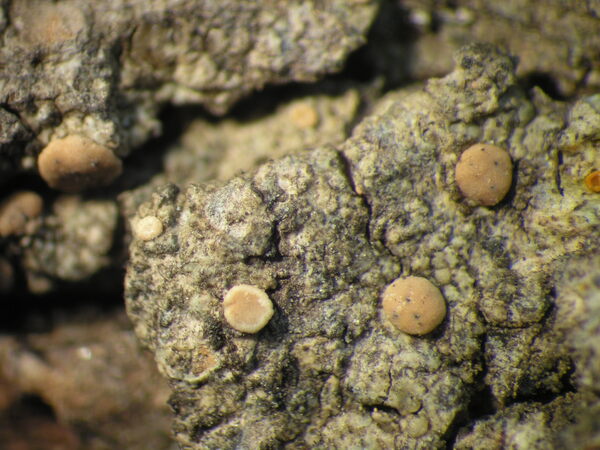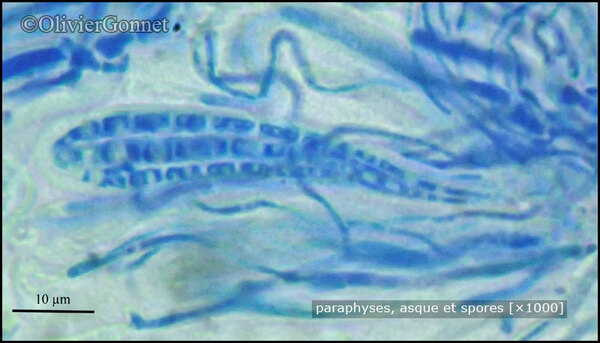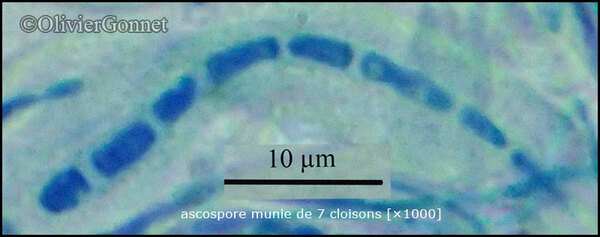Bacidia tyrrhenica Llop
in Llop & al., Nova Hedwigia, 85: 447, 2007.
Synonyms:
Distribution: C - Laz (Llop & al. 2007), Sar (Llop & al. 2007. S - Si (Llop & al. 2007).
Description: Thallus crustose, episubstratic, grey-green; continuous to rimose-areolate. Apothecia lecideine, sessile, pale pink to orange, (0.25-)0.45-1.1(-1.4) mm across, unevenly white-pruinose, with a slightly concave to flat disc, and a concolorous to slightly paler, initially thick and raised, later often almost excluded proper margin. Proper exciple colourless to pale yellow, prosoplectenchymatous, <80 μm wide laterally, the outer part of stout, distinctly radiating cell lumina with gelatinized walls which are thinner than the lumina, the terminal cells oblong to globose, (1.6-)2-4(-6) μm wide, the marginal zone with evenly distributed colourless crystals soluble in K, the medullary part rarely with clusters of colourless to yellowish crystals dissolving in N, K+ intensifying yellowish, N-; epithecium poorly differentiated, pale yellowish brown, with unevenly distributed yellowish to reddish orange crystals dissolving in K but not in N, extending downwards between paraphyses, K-, N-; hymenium colourless, (50-)60-75(-85) μm high; paraphyses coherent, mostly simple and not anastomosing, (0.8-)1-1.2(-1.6) μm thick, the apical cells oblong to globose, 1.6-2.4(-3.2) μm wide; hypothecium colourless to yellowish, K+ intensifying yellowish, N-. Asci 8-spored, clavate to cylindrical-clavate, the apical dome K/I+ dark blue with a pale, conical-pointed apical cushion (axial mass), the wall K/I-, but the thin outer gel K/I+ blue, Bacidia-type. Ascospores 5-7-septate, hyaline, needle-like, 41-53 x 2-3 μm. Photobiont chlorococcoid. Spot tests: thallus K-, KC-, C-, P-. Chemistry: thallus without lichens substances; apothecia with the Rubella-orange pigment.
Note: a Mediterranean-Macaronesian species bound to humid situations in forests, such as in bottoms of valleys or ravines, mostly in coastal, humid situations. In the original description the species was misspelled as “thyrrenica”.
Growth form: Crustose
Substrata: bark
Photobiont: green algae other than Trentepohlia
Reproductive strategy: mainly sexual
Most common in areas with a humid-warm climate (e.g. most of Tyrrenian Italy)
Commonnes-rarity: (info)
Alpine belt: absent
Subalpine belt: absent
Oromediterranean belt: absent
Montane belt: absent
Submediterranean belt: absent
Padanian area: absent
Humid submediterranean belt: absent
Humid mediterranean belt: very rare
Dry mediterranean belt: absent
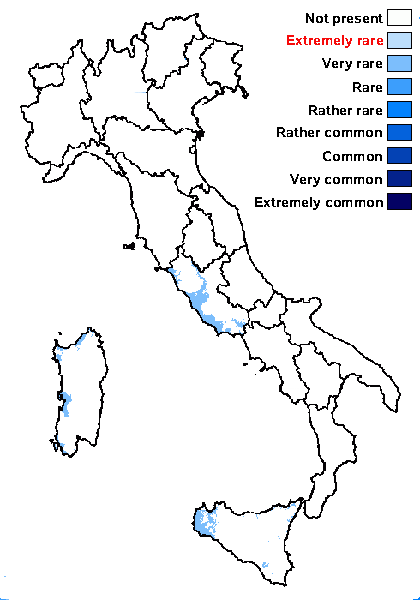
Predictive model
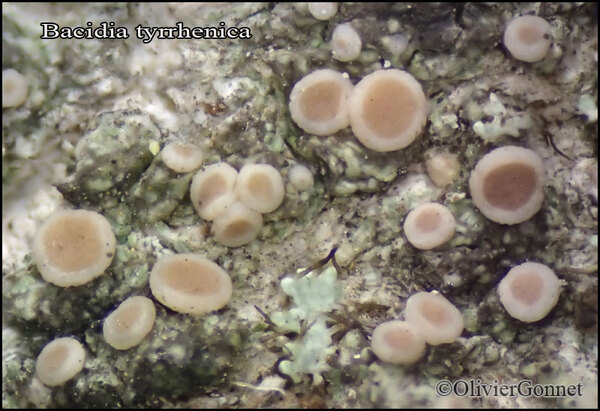
Courtesy: Olivier et Danièle Gonnet - Source: https://www.afl-lichenologie.fr/Photos_AFL/Photos_AFL_B/Textes_B2/Bacidia_tyrrhenica.htm
France, Coti-Chiavari, alt. 5 m - Corse - (20) - Anse Plage de Mare e Sole, bord de plage - sur Pistacia lentiscus
8/10/2017
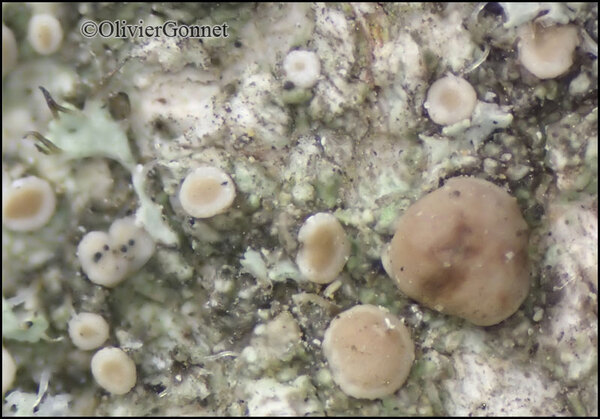
Courtesy: Olivier et Danièle Gonnet - Source: https://www.afl-lichenologie.fr/Photos_AFL/Photos_AFL_B/Textes_B2/Bacidia_tyrrhenica.htm
France, Coti-Chiavari, alt. 5 m - Corse - (20) - Anse Plage de Mare e Sole, bord de plage - sur Pistacia lentiscus
8/10/2017
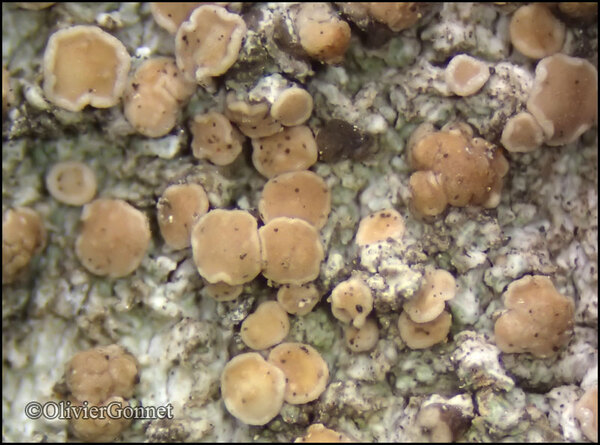
Courtesy: Olivier et Danièle Gonnet - Source: https://www.afl-lichenologie.fr/Photos_AFL/Photos_AFL_B/Textes_B2/Bacidia_tyrrhenica.htm
France, Coti-Chiavari, alt. 5 m - Corse - (20) - Anse Plage de Mare e Sole, bord de plage - sur Pistacia lentiscus
8/10/2017
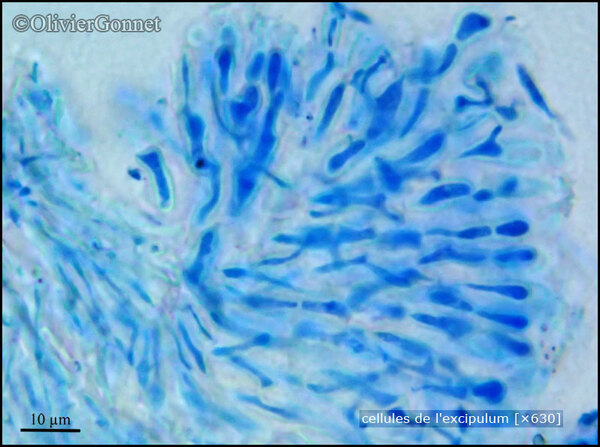
Courtesy: Olivier et Danièle Gonnet - Source: https://www.afl-lichenologie.fr/Photos_AFL/Photos_AFL_B/Textes_B2/Bacidia_tyrrhenica.htm
France, Coti-Chiavari, alt. 5 m - Corse - (20) - Anse Plage de Mare e Sole, bord de plage - sur Pistacia lentiscus
8/10/2017
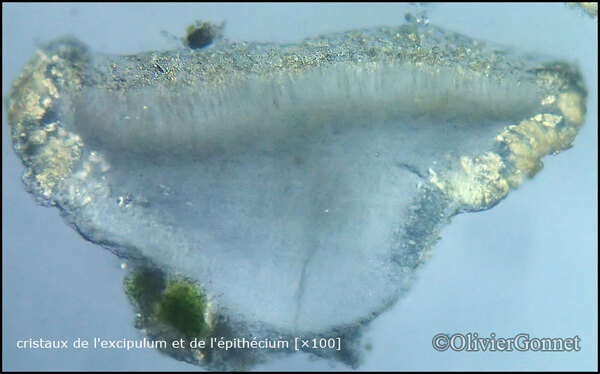
Courtesy: Olivier et Danièle Gonnet - Source: https://www.afl-lichenologie.fr/Photos_AFL/Photos_AFL_B/Textes_B2/Bacidia_tyrrhenica.htm
France, Coti-Chiavari, alt. 5 m - Corse - (20) - Anse Plage de Mare e Sole, bord de plage - sur Pistacia lentiscus
8/10/2017
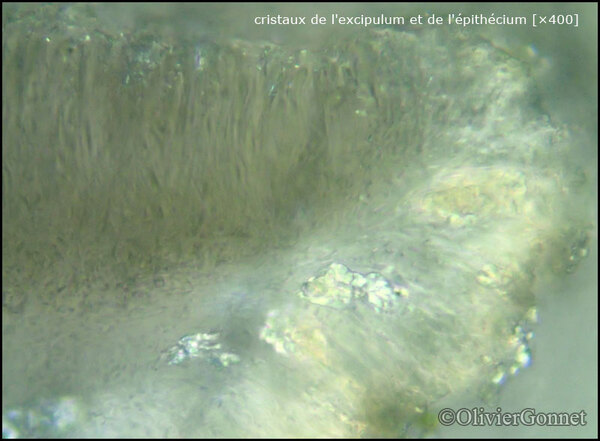
Courtesy: Olivier et Danièle Gonnet - Source: https://www.afl-lichenologie.fr/Photos_AFL/Photos_AFL_B/Textes_B2/Bacidia_tyrrhenica.htm
France, Coti-Chiavari, alt. 5 m - Corse - (20) - Anse Plage de Mare e Sole, bord de plage - sur Pistacia lentiscus
8/10/2017
Growth form: Crustose
Substrata: bark
Photobiont: green algae other than Trentepohlia
Reproductive strategy: mainly sexual
Most common in areas with a humid-warm climate (e.g. most of Tyrrenian Italy)
Commonnes-rarity: (info)
Alpine belt: absent
Subalpine belt: absent
Oromediterranean belt: absent
Montane belt: absent
Submediterranean belt: absent
Padanian area: absent
Humid submediterranean belt: absent
Humid mediterranean belt: very rare
Dry mediterranean belt: absent

Predictive model

Courtesy: Olivier et Danièle Gonnet - Source: https://www.afl-lichenologie.fr/Photos_AFL/Photos_AFL_B/Textes_B2/Bacidia_tyrrhenica.htm
France, Coti-Chiavari, alt. 5 m - Corse - (20) - Anse Plage de Mare e Sole, bord de plage - sur Pistacia lentiscus
8/10/2017

Courtesy: Olivier et Danièle Gonnet - Source: https://www.afl-lichenologie.fr/Photos_AFL/Photos_AFL_B/Textes_B2/Bacidia_tyrrhenica.htm
France, Coti-Chiavari, alt. 5 m - Corse - (20) - Anse Plage de Mare e Sole, bord de plage - sur Pistacia lentiscus
8/10/2017

Courtesy: Olivier et Danièle Gonnet - Source: https://www.afl-lichenologie.fr/Photos_AFL/Photos_AFL_B/Textes_B2/Bacidia_tyrrhenica.htm
France, Coti-Chiavari, alt. 5 m - Corse - (20) - Anse Plage de Mare e Sole, bord de plage - sur Pistacia lentiscus
8/10/2017

Courtesy: Olivier et Danièle Gonnet - Source: https://www.afl-lichenologie.fr/Photos_AFL/Photos_AFL_B/Textes_B2/Bacidia_tyrrhenica.htm
France, Coti-Chiavari, alt. 5 m - Corse - (20) - Anse Plage de Mare e Sole, bord de plage - sur Pistacia lentiscus
8/10/2017

Courtesy: Olivier et Danièle Gonnet - Source: https://www.afl-lichenologie.fr/Photos_AFL/Photos_AFL_B/Textes_B2/Bacidia_tyrrhenica.htm
France, Coti-Chiavari, alt. 5 m - Corse - (20) - Anse Plage de Mare e Sole, bord de plage - sur Pistacia lentiscus
8/10/2017

 Index Fungorum
Index Fungorum
 GBIF
GBIF
